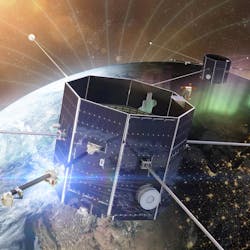NASA selects SpaceX to launch space weather satellites
WASHINGTON - The National Aeronautics and Space Administration (NASA) needed launch services to place the agency's Tandem Reconnection and Cusp Electrodynamics Reconnaissance Satellites (TRACERS) into mission position. They found their solution with SpaceX in Hawthorne, California.
TRACERS are a pair of a pair of small satellites that will study space weather and how the Sun's energy affects Earth's magnetic environment, or magnetosphere. NASA says TRACERS is an addition to the agency's heliophysics fleet and aims to answer long-standing questions critical to understanding the Sun-Earth system. The spinning satellites will study how solar wind, the continuous stream of ionized particles escaping the Sun and pouring out to space, interacts with the region around Earth dominated by our planet's magnetic field. This interaction, or magnetic reconnection, is an intense transfer of energy that can happen when two magnetic fields meet, which could potentially impact operations with crew and sensitive satellites.
TRACERS will repeatedly fly through the northern polar cusp, one satellite behind the other, to study where and how often reconnection happens at the outer edges of Earth’s magnetic field. These measurements are critical for understanding and eventually predicting how energy from our Sun transfers into our planet.
TRACERS is led by Craig Kletzing at the University of Iowa and managed by the Southwest Research Institute in San Antonio, Texas. NASA’s Heliophysics Explorers Program Office at NASA’s Goddard Space Flight Center in Greenbelt, Maryland provides mission oversight to the project for the agency’s Heliophysics Division at NASA Headquarters in Washington, D.C.
NASA's Launch Services Program, based out of the agency's Kennedy Space Center in Florida, in partnership with NASA's Heliophysics Small Explorers program, announces the launch service as part of the agency's VADR (Venture-Class Acquisition of Dedicated and Rideshare) launch services contract.
